
Live Chat!
SVX or Subaru Links
Old Lockers
Photo Post
How-To Documents
Message Archive
SVX Shop Search
 |
SVX Network Forums Live Chat! SVX or Subaru Links Old Lockers Photo Post How-To Documents Message Archive SVX Shop Search |
IRC users: |
|
#1
|
||||
|
||||
|
Voltage Drop Primer
I am doing this in order to help those with electrical issues. This is not an in-depth, technical dissertation but rather a down and dirty tutorial in layman's terms. So, on with the show...
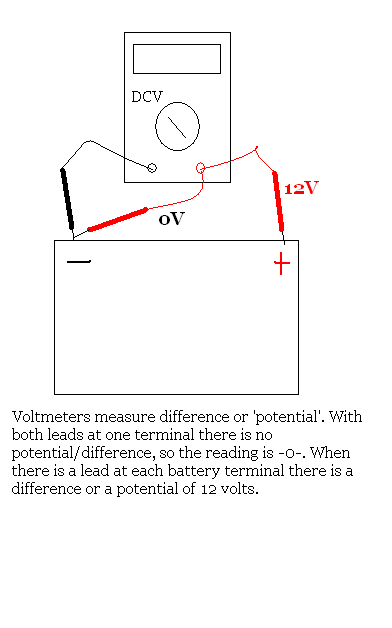 For the sake of space there are two red (+) leads displayed. In real life there would only be one, I am merely demonstrating two different positions and the resulting values. 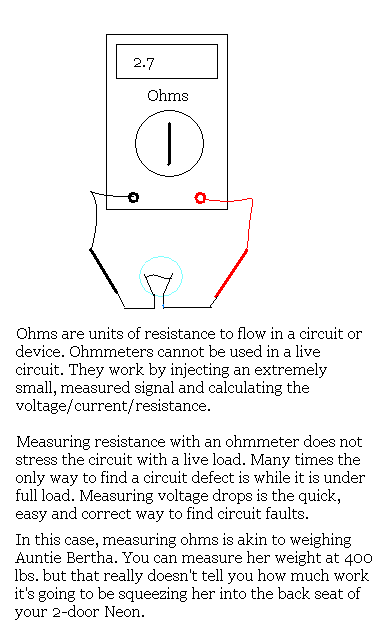 Pretty self-explanatory. Practicality dictates that measuring resistance is a waste of time for most automotive circuits. Picture a battery cable that only has a hair's thickness of physical diameter left due to corrosion. An ohmmeter will measure that as a good cable but when you try to spin that high-compression hemi over a completely different story will emerge. That's also why many sensor value specifications are in volts, not ohms. (Remember, you EE types, I said down, dirty and practical.) And if you get Aunt Bertha into your Neon it will have become a two door vehicle... 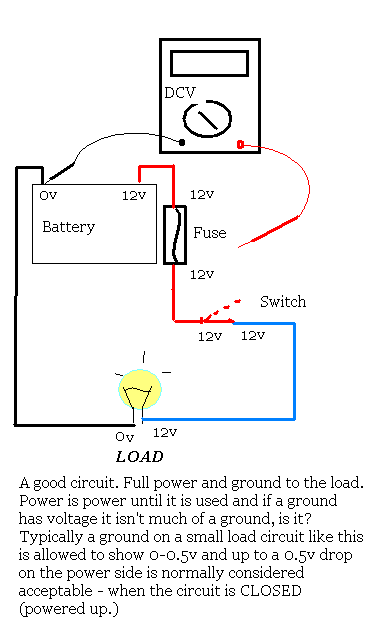 Above you can see that the voltmeter ground lead remains at the battery's negative terminal at all times. Each voltage in the picture represents the measured value displayed on the meter when the red (+) probe is touched to that point. You can see that the switch is closed and the circuit is powered up.  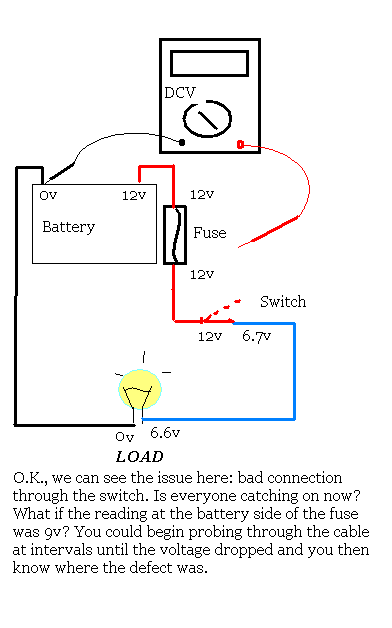 Probing through a cable more than a couple inches from either end is an exercise in futility. Within a couple inches the wire could possibly be trimmed back and a new connection made. Beyond a couple inches just cut the circuit loose and install an 'overlay' or replace the cable entirely. Poking/probing wiring is a no-no as corrosion will inevitably occur from the punctures. 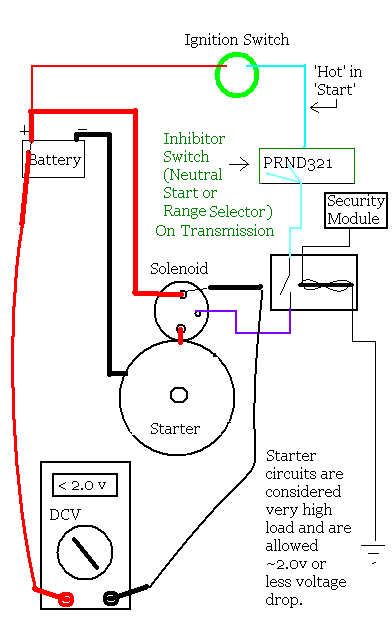 Now that we understand how to measure a voltage drop, and why, the main item to remember is that the circuit has to be powered up! In other words someone has to be holding the key in the 'Start' position while you probe the various terminals, etc. In the starter circuit above (as the SVX appears)(and the starter interrupt relay is depicted, just below the security module) one can readily see how leaving the red probe on the battery and moving the black probe along the different points of the circuit will reveal any deficiencies. It doesn't matter which probe is used nor does it matter if your reading is +v or -v, it's the numbers that matter. Remember, the starter to battery is a huge circuit and a voltage drop of 2v is acceptable (actually up to 3v is acceptable but when a customer is paying me $130/hr. I try to do a lot better than 'acceptable".) Smaller circuits can tolerate a 0.5v drop (I shoot for 0.2v or less.) When energized the ignition switch would be in the 'start' position, the inhibitor in 'P' or 'N', the interrupt relay closed and power applied to the solenoid trigger terminal and the solenoid closed, passing high current from the battery to the starter terminal. A voltage reading appears, hopefully indicating less than two volts difference. Now you can see how easy the process is, it's the access that sucks. But this is the only proper way to diagnose an electrical issue. Unless you consider the shotgun approach acceptable - just continue throwing $$/parts at it until a) you stumble across the cure, or b) you get p.o.'d and sell the car. Enough for now, tonight is $1 wells two blocks away and this is seriously cutting into my buck-to-buzz yield.
__________________
ASE Certified Master Automotive Technician w/L1. ASE Certified Master Medium/Heavy Truck Technician. Certified EVT (Emergency Vehicle Technician) Last edited by Beav; 12-28-2006 at 08:42 PM. |
|
|